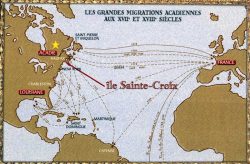Pierre Dugua de Mons
(about 1560-1628)
The Calvinist nobleman Pierre Dugua de Mons founded Acadia and with the help of Samuel Champlain, created the basic structure of a French colony in Canada.
He was a militant of the reformers' cause
Pierre Dugua de Mons was born in Royan around 1560. He belonged to a wealthy family of the reformed faith who lived in Saintonge. From his youth onwards, he fought in the religious wars against the catholic league and he gave his support to Henry IV – he was rewarded by being appointed gentleman of the royal bedchamber.
Exploration of Canada
Vérazzano discovered this region of North America in 1525 and again in 1534 by Jacques Cartier, who called it New France, or Acadia. After the wars of religion, Henry IV decided to re-colonise this area of America, against Sully’s advice. Breton and Norman fishermen already traded furs with the local inhabitants.
In 1599 Pierre Dugua de Mons sold his château in Mons to finance an expedition to explore these undiscovered territories with his Protestant friend, Pierre Chauvin, who came from Normandy.
In 1603 Pierre Dugua de Mons was appointed “first lieutenant of Acadia, its coasts and frontiers” and vice admiral by Henry IV. His mission was to conquer the land and to convert the local American Indians to Christianity. In order to finance this expedition, Henry IV gave Dugua de Mons a complete monopoly over all the fur trade with the Indians.
The conquest of Acadia
In 1604, Dugua de Mons set up a commercial business with merchants from Rouen, St. Malo and La Rochelle. He fitted out two ships, “the Gift of God” and the “Good Renown” and led this first expedition with several other noblemen and another protestant, Samuel Champlain, who was a navigator and cartographer. They established a base at Sainte Croix island and then in Port Royal, but the settlers suffered from scurvy and the icy Canadian winter. In 1605, Dugua left the Port Royal base in the hands of Champlain and Pontgravé and returned to France in order to prepare for a new expedition. He was much criticised for his monopoly of the fur trade and his stubborn adherence to the reformed faith, but he managed to equip a new ship which was later to explore the South American coast, but he never established another French base there.
In 1607, Dugua met with more opposition, largely because of his monopoly of the fur trade. Henry IV, giving in to Dugua’s enemies, revoked the monopoly of the fur trade. The project of establishing a colony did not seem to be financially profitable so the French had to return home. They left Port Royal in the hands of the Indian chief Memberton, who remained on excellent terms with France.
The foundation of Quebec
At the beginning of 1608, Dugua regained the monopoly of the fur trade for a year from Henry IV. He sent Champlain on ahead to the Saint Laurent River in order to set up a new base. He reached the site which would later become Quebec on the 3rd of July 1608. In 1609, the king put a definitive stop to the monopoly of the fur trade and Dugua was abandoned by his associates. He did however, save the site of Quebec by buying up the shares of his associates. In fact, he had spent most of his fortune on the Acadian cause. When Henry IV was assassinated in 1610, Pierre Dugua de Mons lost a great ally.
Louis XIII reproached him for being a Huguenot and for maintaining his Protestant faith at all costs. Champlain had not hesitated to convert to Catholicism.
In 1612, Dugua de Mons gave up his title of Lieutenant General, handing it over to Henri de Bourbon, prince of Condé.
Return to Saintonge
In 1610, Pierre Dugua de Mons was appointed governor of Pons, a Protestant stronghold, which he tried to rebuild.
In 1618, he sold his office of governor and bought the château of Ardenne near Fléac sur Seugne, where he lived until his death. He always remained a faithful supporter of Champlain and the French families who wanted to settle in Canada.
Bibliography
- Books
- Les huguenots en Acadie, Huguenot héritage, hiver 2002-2003
- BINOT Guy, Pierre Dugua de Mons, Lieutenant de la Nouvelle France de 1603 à 1612, Éditions de la Bonne Anse, 2004
- Articles
- "La Marine et les colonies", L'ancienne France, Paris, 1888
- MARTEL Robert, "Pierre Dugua de Mons", Lettre du Comité protestant des amitiés françaises à l'étranger, 37956, Numéro 32
Associated notes
-
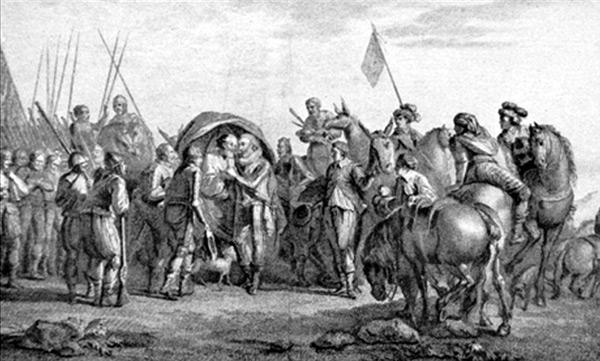
Sully (1559-1641)
Maximilien de Béthune, Baron of Rosny and Duke of Sully, became a close companion of Henri de Navarre at a very early age. He became his most valuable adviser and his government... -
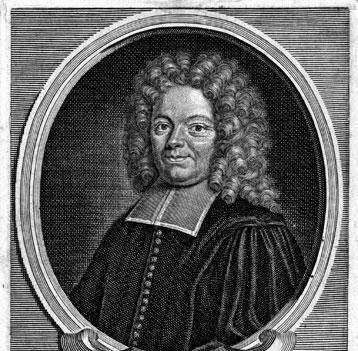
Jacques Basnage (1653-1723)
Jacques Basnage was a pastor in Rouen at the time of the Revocation of the Edict of Nantes – he had to escape from France due to persecution and took... -
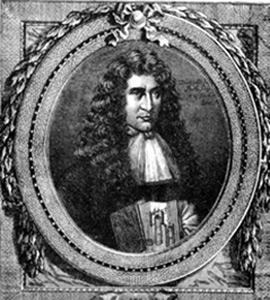
Denis Papin (1647-about 1712)
Denis Papin, a physicist, always remained loyal to his reformed faith and this is why he had to work abroad. It was in Germany, in the province of Hesse, that... -
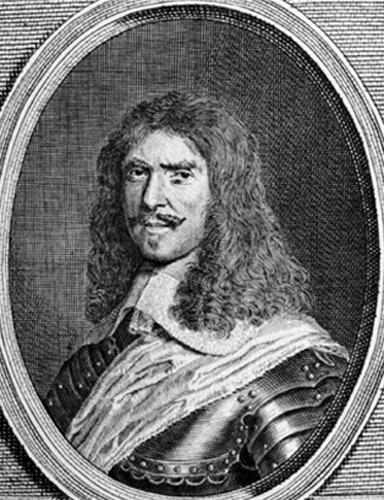
Turenne (1611-1675)
Turenne, a great military leader, was converted from Protestantism to Catholicism ; this experience was very significant for him. -
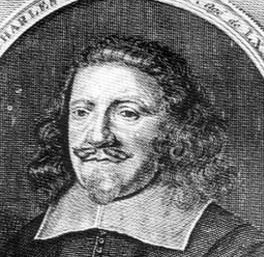
Charles Drelincourt (1595-1669)
Charles Drelincourt, a writer and a pastor, spent his life serving the reformed Churches. -
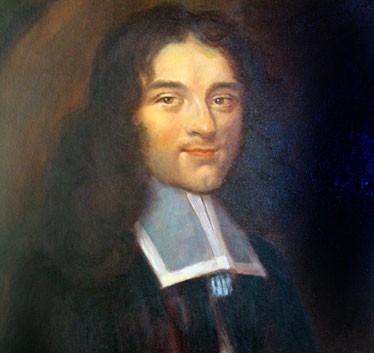
Pierre Bayle (1647-1706)
Pierre Bayle can be seen as a forerunner of the Age of Enlightenment because the concept of tolerance was of great importance to him and, a true scholar, he specialized...

